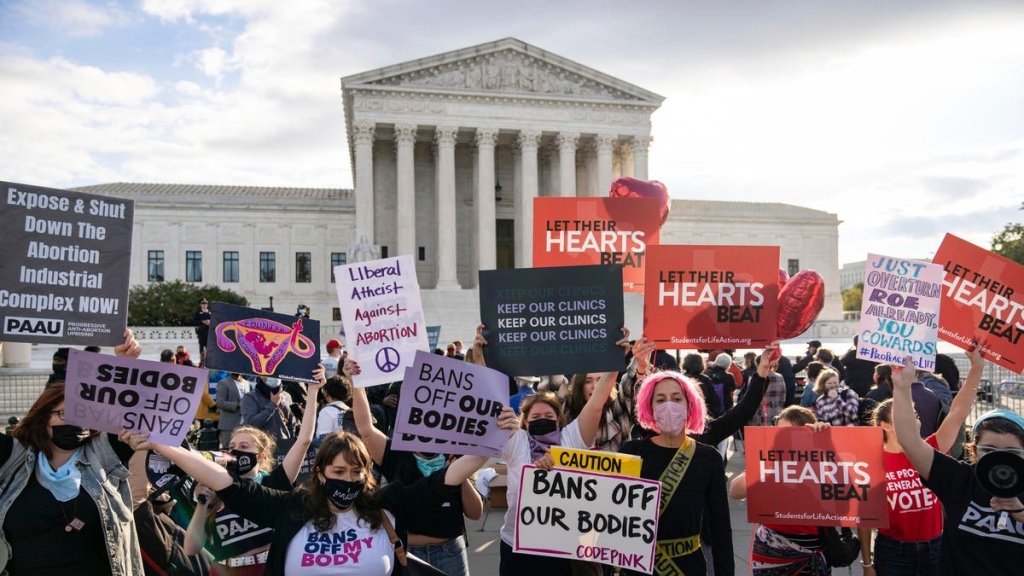-
The Vindication of Biden’s Nation
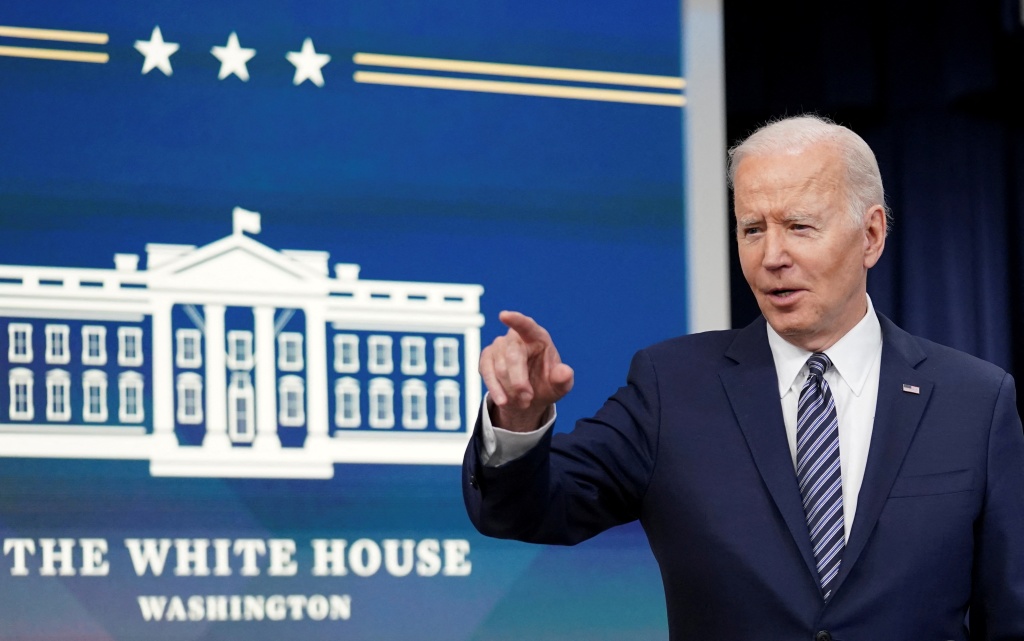
One polemic that united Americans across the so-called political spectrum is the contempt we all held for President Joe Biden’s first year and a half in office. Progressives were angry about Biden’s lack of concessions made to the progressive movement within the DNC; centrists were angry that nothing was getting done despite having a corporate centrist of a president; and conservatives were angry with gas prices, inflation, and the idea that Biden is somehow a radical socialist who is uprooting U.S. institutions in favor of far-left policies (a delusional notion disseminated in quite ironic fashion, indeed). However, we’ve witnessed a categorical paradigm shift in President Biden’s tenure over this past year, particularly in the last few months.

Nobody is claiming that Biden’s presidency is—or ever will be—perfect, but today we will explore ten important American accomplishments we have witnessed over the past few weeks and months (some of which Biden played an integral role, while in others he played a minor part). Granted, progressives are still far from satisfied with his contentious presidency, but he is no longer a disaster. This is particularly apt when it comes to circumnavigating the roadblock that is Senators Joe Manchin and Krysten Sinema, two Wall Street and special interest beneficiaries who blocked virtually all major DNC initiatives early on in the debacle of the 50-50 split Senate we’ve suffered through since January of 2021.
Alas, this November election season couldn’t be more quintessential to crystallizing the agenda that Democrats collectively settled on, so we need to stay focused on nominal Democratic accomplishments (rather than wading in incessant cynicism). For without a majority in the U.S. House, an ominous fate which seems likely at this point, Democrats will face even more roadblocks as Republicans continue to actively obstruct virtually every single Democratic initiative—even when that means voting against bills that will ameliorate, for example, the ramifications of the Covid-19 pandemic on our economy. Why? McConnell and McCarthy will do whatever it takes to tank public belief in President Biden, and they’re willing to try to tank the economy in the process if it means victory in the midterms. So, without further adieu, let’s highlight ten major accomplishments by Biden’s administration as of August 16th.
- Gas Prices Fall for 63 Straight Days
- The Historic Inflation Reduction Act
- Biden Virtually Ended the Drone War
- The Fastest Economic Recovery Ever
- Unemployment Rate Falls to 3.5%
- First Big Gun Legislation in 30 Years
- Biden’s Bipartisan Infrastructure Bill
- Joe vs. SCOTUS Ruling on Abortion
- SCOTUS Judge Jackson Confirmed
- U.S. Helps Ukraine Push Russia Back
This is just a small condensation of the many things Biden has accomplished—but these ten prove to be a consequential sequence of events, nevertheless. Gas prices, which soared in response to both the Covid-19 pandemic and Russia’s invasion of Ukraine, have now fallen for nine consecutive weeks and continue to fall. Meanwhile, the inflation reduction act symbolizes a historic achievement in economic, climate, healthcare, and bureaucratic legislation. As for drones, the ostensibly incessant spree of drone strikes U.S. presidents oversaw from the dawn of Obama’s presidency all the way through Trump’s presidency has encountered a decisive end—with the number of known U.S. drone strikes plummeting (plus, of the few that our government continues to oversee, the Biden administration can now tout its successful drone strike killing of ISIS’s leader a month ago in July). Meanwhile, the economy continues to roar in virtually every known economic facet aside from GDP—an understandable drop given the large-scale implications of Covid-19. Furthermore, while the pandemic of gun violence continues in this country, Congress and President Biden have acted accordingly, passing the first major bill to curtail mass shootings in a whopping three decades. As for infrastructure, a crumbling facet of the bureaucracy that Trump (despite his promises) did absolutely nothing to address, Biden’s bipartisan bill will take steps to rebuild our logistical systems. And although Trump did much to tarnish the Supreme Court with the judges he jammed through the nomination process, Biden successfully nominated the amazing Ketanji Brown Jackson. Finally, while experts across the board speculated that Ukraine’s capital Kiev would fall within a few days after Russia invaded Ukraine back in February, the U.S.-backed Ukraine defensive has proved formidable, thus symbolizing a major boost not only for Ukraine but also for the entire world.
Note: This article was co-written by Alyson Mueller and Luke Atkins.
-
The U.S. Media is Brainwashing Everyone About the Economy
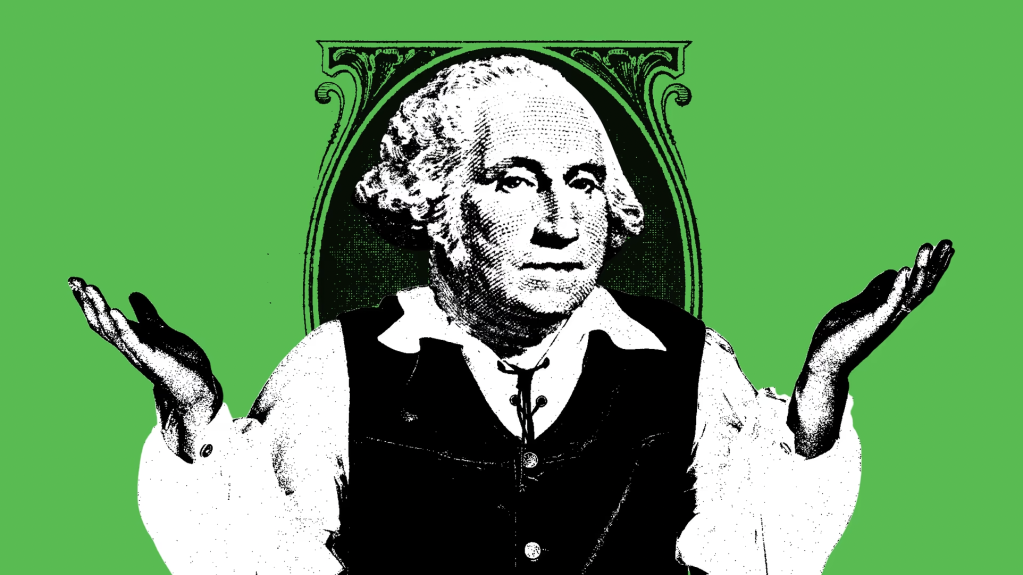
As Noam Chomsky elucidated so eloquently in his landmark novel Manufacturing Consent (1988), the U.S. media complex claims to exist in a dichotomy of “liberal” and “conservative* factions—and yet this is far from the case. How so? All mainstream media outlets in this country operate on this confluence of motives: perpetuating the current system, protecting their benefactors, perpetuating the myth that we’re polarized (despite almost everyone being center-right or far-right relative to the rest of the world) in order to divide everyone into the two powerful camps, and fixating on identity politics to project an archetype of what it means to be a “liberal.” They paint this modern “liberal” as one who merely dwells upon optics & cancel culture. It’s a straw man used by right-wing economic apologists—e.g. all U.S. mainstream media—to strip the actual left wing of any voice. (Besides, the ”social justice warriors” whom many believe are the left are anything but that; they are reactionary multicultural fascists who obsess over petty rhetoric and obstruct progress by deflecting from the more consequential issues.)
Again, all mainstream media in this country is right-wing on economic issues—and the clandestine overlords working the scenes at the likes of CNN and MSNBC have unilaterally stolen the voices of all of the true economic leftists. We have no say, and we will not enjoy one anytime soon because the GOP has cleverly spent so much time oppressing minorities and galvanizing the outcries of those with (valid) concerns about the right’s social policies to the point where, as manifested in the 2016 election, the popular force that was ostensibly against Trump barraged social media about his racism, homophobia, sexism, etc. But that’s it; that’s all they talked about. And those of us opposing Trump not only due to his character but also his policies had no platform.
As a result of these types of covert schemes, the right controls narratives about the economy, and its proponents have convinced the majority of Americans to believing the ludicrous notion that the GOP (of all factions) has viable economic policies and is fiscally responsible. The Republican Party is neither of those things, though. And its economic policies are remarkably bad. But, as introduced earlier, because the media tug-of-war between Fox News and CNN is just a “battle” between conservative economic policies and neoliberal economic policies, everyone wins and nobody wins. All media outlets win; meanwhile, humanity loses because we’re stuck with one option. So again, the media is a battle of outlets that back the same economic policies—hence they must delude the public to promulgate an unfounded idea that a healthy ideological variety exists.
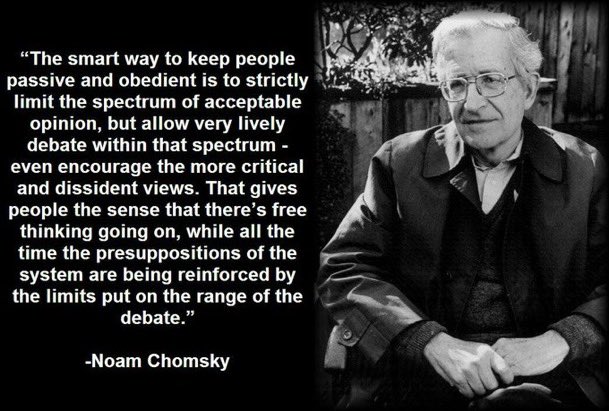
Quite frankly, the economy hasn’t changed at all in the last ten years (insofar as one could reasonably characterize any continuous trend of growth as a fixed datum). So what have the last three presidents done to ameliorate the economy that “fiscal conservatives” crashed in 2008? Do presidents even deserve much credit for recoveries? And how is the media industrial-complex so good at disseminating baseless lies to the point where 99% of the public has no idea how the economy is doing at any given time? The answer is hidden in plain sight: a lucid, sinister truth we’ve collectively ignored for generations.
Obviously, there is neither a single measure nor an amalgamation of measures that can pinpoint the state of something as byzantine as our massive economy, yet I dare readers who believe anything has changed from Obama to Trump to Biden (barring the economic fallout of the Covid-19 crisis, an unavoidable phenomenon that has less to do with policy itself, compared to how policy and practice shape the economy in normal times) to name a single major metric by which the economy has truly changed since Obama. Fine, you can say that consumer confidence has fluctuated as a result of well-disseminated lies. Still, this has nothing to do with actual policies. When it comes to other economic metrics, little has transformed since Obama. We’ve faced a bull market for about a decade in which the economy has maintained shockingly similar slopes of continuous growth—we’re talking GDP, the stock market, unemployment, debt, trade, deficits, etc. Look at these charts!
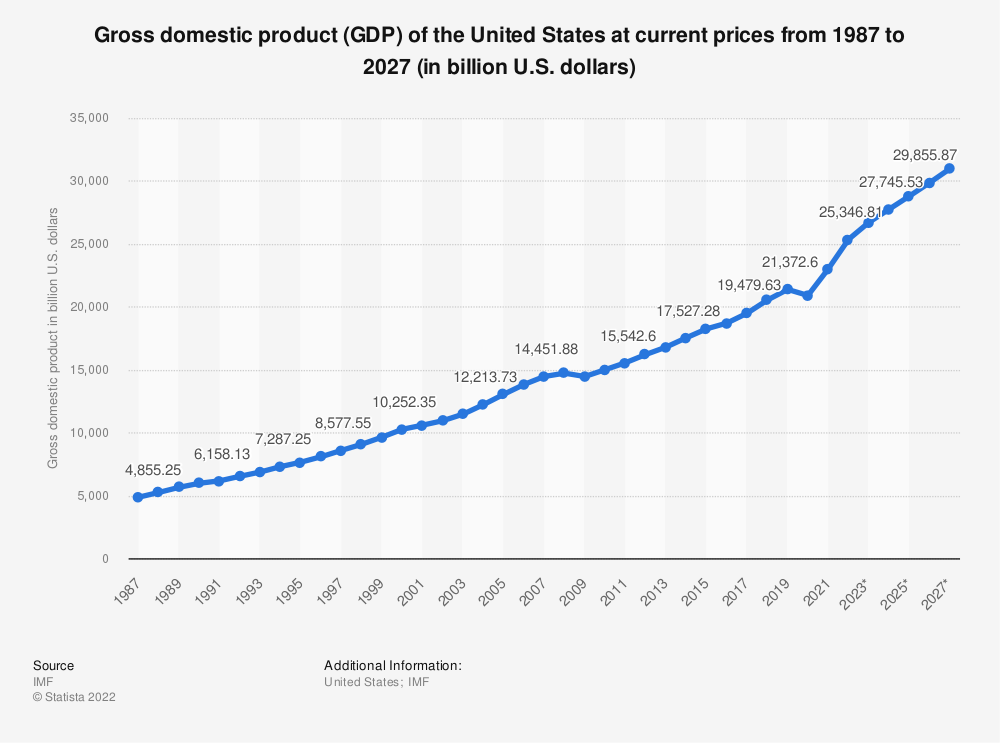
No shockers as for GDP growth. 
The stock market hasn’t changed, barring a drop from Covid fallout: just a perpetual run of stable growth.
Not much traction when it comes to government debt, too. Surprised? 
Unemployment: same old same old. 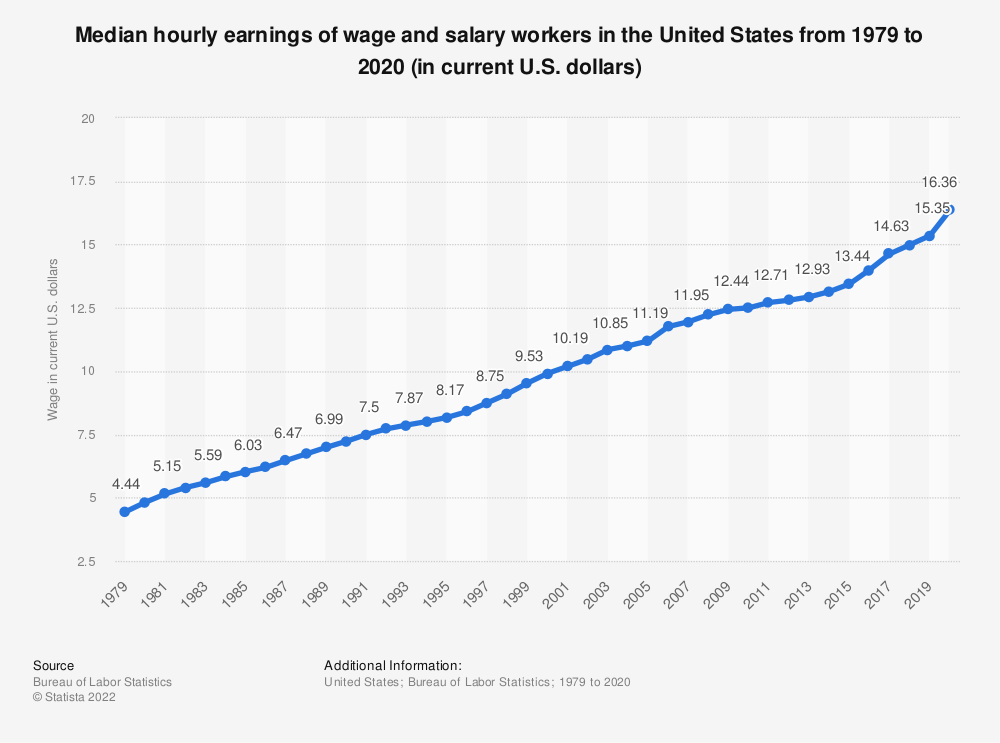
Same old same old wage growth. 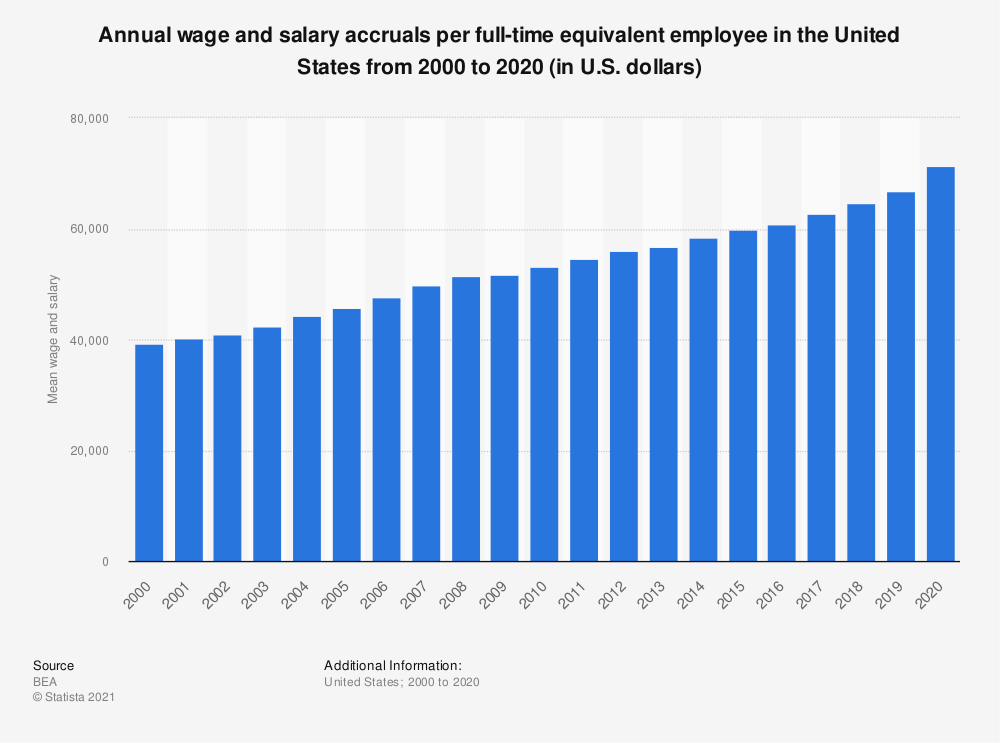
Same for annual wages and salaries outside of the bump in 2020 due to Covid. 
A steady rise of government spending that’s set to remain as such for years. 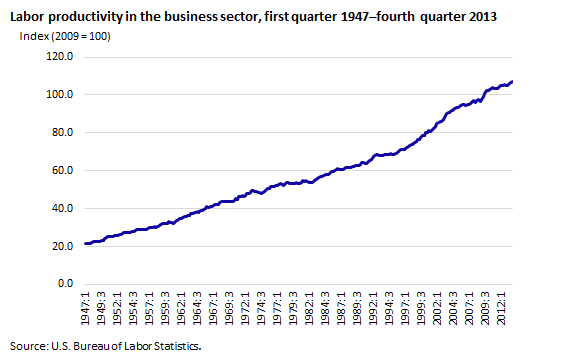
Same slope as usual for labor productivity. (Click on any photo to see the full size.)
Of course, a few select charts could never comprehensively round each base of all of the components that go into economic performance, but be my guest if you have doubts. We’re simply stuck in the cycle of an economy that is rigged for the top .1% (which controls the stock market and assets and salaries and severances, plus these .1% plutocrats find ways to elect politicians who give them—not the lower & middle classes—lopsided tax cuts while also letting them contravene tax code to pay taxes at a lower rate than those in lower tax brackets). Indeed, economic growth as a whole is myopic because it’s only indicative of the wealth of the ultra-rich. So, this broken system is the fault of the right (i.e. all Republicans and many Democrats, particularly ever since the Clinton administration allowed commercial and investment banks to merge in the 90s). And when the economy crashes, it’s often due to right-wing policies: deregulation, condoning corporate vanity, etc.
And while it is true that presidents have far less of an impact on the overall economy than you’d think, every policy does formulate tangible, large-scale implications. Plus, when such policies are rooted in corruption and antiquated ideals pushed by the corporate “masters of mankind,” they just have to pay off the media & the parties and find a way to masquerade dangerous levels of deregulation. This may sound contrived, but it’s all about the money. And especially since right-wing think tanks and political action groups spawned like wildfire in the late 70s and early-to-mid 80s in response to the changing infrastructure of class mobility engendered by the civil rights movement, the rich—who feared that they would begin to relinquish the tight grip they’d wielded over the poor—have moved to consolidate power & wealth.
Still, as far as presidents do influence the economy, the economic brainwashing of the mainstream media—which understandably prefers economic conservatives in power due to the way such politicians tend to prioritize the wealth of those powerful enough to control the media over the wealth of everyone else—is ironic given that the economy tends to perform better under Democrat presidents (and has for a long time). We can talk about how evident this has proved between the GOP and DNC since the 1920s, but let’s discuss the manifestation of this in the last 10 years. But remember: what you’re about to read is not some arbitrary retroactive analysis. This is a recollection of something that was evident then, something I and countless others have tracked for over a decade.
The short answer is that, while Obama did a solid job and Biden has done a mediocre job, Trump did a terrible job. His economic policies were awful in far more ways than we could possibly begin to address (the main & rudimentary metrics aside), and this was no surprise given that he never promised a viable economic platform in the first place: from the start of his campaign to the end of the presidency. All he did was hyper-fixate on a few relatively frivolous matters (like the Trans-Pacific Partnership, something he repealed simply to replace it with a nearly identical deal he could take credit for) and ride off the ubiquitous—yet baseless—delusion that he’d simply do well because he’s a businessman. It was a brilliant tactic. Yet, in reality, Manhattan billionaires are the last people on Earth we should elect to office; doing so only eliminates the barrier between politicians and the rich forces that corrupt them by instead placing power directly into the rich, who have spent decades mastering how to disguise selfish acts as altruism.
Meanwhile, the Obama & Biden economies have outperformed the Trump economy even by most metrics that were used to arbitrarily call the Trump economy unprecedented. Likewise, everything that was at an “all-time high” under Trump was also at an all-time high throughout Obama’s second term—and continues to hit all-time highs under Biden, which substantiates why the media is deluding people. All that changes is the economic measures by which the media (and thus social media as well as public and private arenas everywhere) focuses on.
Throughout Obama’s eight years as president, all the right-wing media talked about was the government’s nominal public debt (which was skyrocketing because of the crashing of the Bush economy and the many trillions of dollars blown on the unsolicited wars of the Bush-Cheney-Rumsfeld military-industrial complex). Very few talked about the indisputable fact that—from March 5th, 2013 onward (just a month and a half into Obama’s second term)—the stock market began what continues to prove a historic run of breaking its own all-time high record over and over again (thousands of times) in the last nine years. Then, when Trump took office, Republicans and their media suddenly began to gasconade about the Dow Jones hitting these all-time highs, just like it managed across the four Obama years leading up to Trump’s four years.
The same goes for other metrics that continued reaching record rates as a natural ramification of our decade-long bull market. So, as expected, the aforementioned Trump narrative immediately evaporated once Biden took office, with the mass media eradicating its perpetual feedback loop under Trump of unilaterally obsessing over stock market and unemployment records (things Trump had nothing to do with—barring the despicable fact that Trump used his puppet Fed chair, Jerome Powell, to pump tens of trillions of dollars into the big banks to artificially create selfish, short-term embellishments of these stock market “record” numbers—despite the fact that we had already recovered from the economy that Republicans and the Greenspan crowd crashed in 2008, as well as despite the fact that they knew that such actions would engender devastating inflation once the reckless monetary policy caught up to us a few years later—a cute ancillary gambit that has since been exploited to blame Trump inflation on Biden).
At the end of the day, the iconic maxim that “You are entitled to your own opinions, but you’re not entitled to your own facts” proves apt as this expanse of problems continues to transpire; Trump and Biden are united in that neither ever really cared about actually helping everyday Americans. Regardless, you can try to use antagonistic rhetoric to deny that our government gained nearly as much debt under four years of Trump than it did under eight years of Obama. You can try to deny that consumer confidence was the only thing Trump did for the economy that was beneficial for the public—and that the stock market highs and unemployment lows under him were no different than those of Clinton, Obama, and Biden. You can try to deny that today’s inflation is due to a combination of policies that came before Biden & Covid-19. And so on.
But don’t do it. Aside from the reality that you would be objectively wrong, it would mean that you are waving the white flag to the media—that you are openly allowing it to contort, deceive, and obfuscate your understanding of what is actually happening right now in the United States. Yet I believe in you; I believe in us. We just need to learn how to do our own objective research, outsource the information we seek in an unadulterated way, and utilize the intellectual curiosities with which we’re endowed to seek the truth. There is much more to be said about the infrastructure of how one can follow these steps, but we’ll save that for later. Until then, consider freeing yourself from all media and—rather than deciding which media to follow—finding ways to keep up with the world without a complex that is grounded in reactionary sensationalism.
Note: Luke is Alyson’s partner, and he wrote this guest post with intentions like those of Alyson: to inform the public of profound problems that the media fails to elucidate. He is studying Government and History at Harvard University these days.
-
Let’s Talk About the Political Spectrum

Throughout my lifetime as a U.S. citizen, one peculiar anomaly that I’ve noticed among most Americans is that they tend to think of political ideas in a black-and-white manner; they are also obsessed with placing ideas in a reductive, arbitrary two-dimensional spectrum (when they should exist in a much more multi-faceted apparatus). Given the two-party system in which we now live, it seems on the surface level that Americans would believe that both parties are the true extremes of the political spectrum. An odd difference, though, is that the centrists and Republicans of the world all find progressives to be crazy fringe communists, while true far-right extremists exist in the U.S. government.
The truth that some people reading this may find offensive is that there is not a single authoritarian socialist or communist within the U.S. government. The American notion of the political spectrum has been misconstrued by the media and education system over the past few decades. Noam Chomsky remarked in The Common Good (1998) that “The smart way to keep people passive and obedient is to strictly limit the spectrum of acceptable opinion, but allow very lively debate within that spectrum…. That gives people the sense that there’s free thinking going on, while all the time the presuppositions of the system are being reinforced by the limits put on the range of the debate.” In fact, that is what the U.S. media and education system have largely done.
The spectrum of acceptable opinion in the US—which is already largely skewed to the right—leaves room for judgement only of the far-right fascists and the so-called “left-wing” progressives. This is why progressives are commonly equated with communists: the range of opinion in the US has been restricted so that anyone who criticizes business can essentially be written off as a communist.
To elucidate this, I implore the reader to consider that the political spectrum of the world is far more vast than in the United States. How is it that we can have politicians in the far-right, like Marjorie Taylor Greene and Lauren Boebert, who emulate characteristics of corporate fascism—and yet the people who are the farthest left would be considered centrists in any other economically advanced democracy?
Through my time learning about other democracies, it has become quite clear to me that other societies have more open discussion about politics that doesn’t seem to become personal. I was also struck by the range of opinion that exists elsewhere, which helped me realize that—through careful mastery of the media and education by self-serving forces, the U.S. political spectrum has become one where only ideas of corporate capitalism are acceptable. However, lately the Republican faction of the government has decided that an effective strategy is to write off virtually every Democratic politician as a socialist. This is ludicrous, as Biden and many other members of the Democratic Party are staunch capitalists. In fact, here is a visual representation of where 2020 presidential candidates lied on the political spectrum:
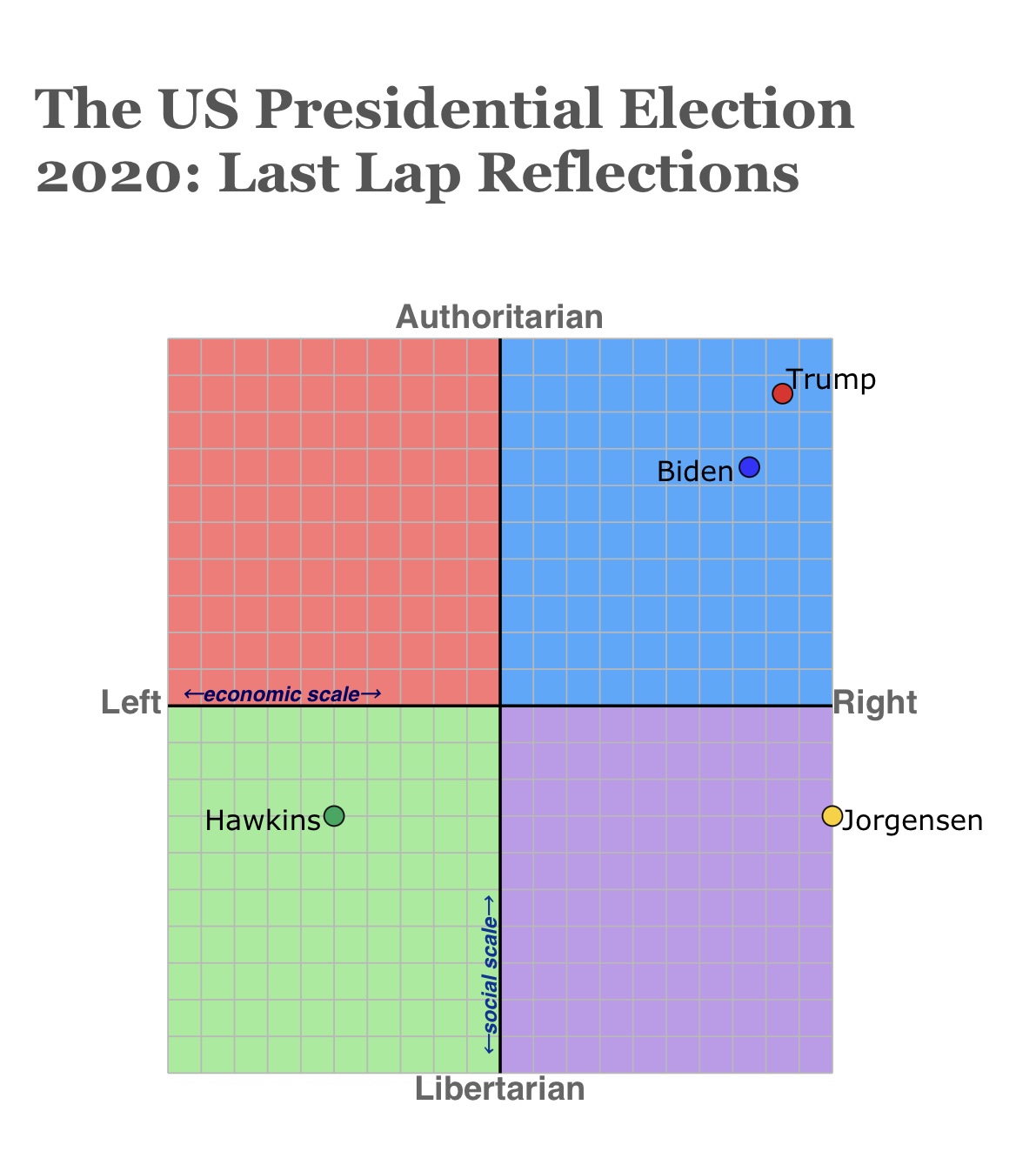
This is the political compass. It was created by a political journalist in order to help people better gain a sense of where they stand politically. So, this is the political difference between the candidates. Most of the members of the U.S. government are in the “Authoritarian Right” quadrant; progressives are usually in the Libertarian Center-Left; very few, if any, U.S. officials belong in the “Libertarian Right”; and there are positively no U.S. representatives in the “Authoritarian Left” quadrant.
One common (and exclusively American) train of thought is that there is no way that libertarian socialism can exist. It is a commonly held belief in the United States that all socialism is government overreach—and nothing more. For a country which has a deeply rooted historical pattern of defunding universal welfare programs and blaming the government for their inefficiency—culminating in turning them to private hands—it’s not shocking that Americans dislike all government presence in life. However, libertarian socialism is a way for the government to curb class unrest through creating equitability instead of turning to dismantling democracy. (I will address this notion in a future post.)
One final thing I’d like to leave readers with an understanding of is that acting as an esoteric centrist in the US is a cop-out. Being a centrist in the US is not the anti-establishment move that people often think it is. Self-proclaimed centrists often elaborate that they don’t like the government deferring to the economic elite and interest groups and would instead prefer the power to be “in the hands of the people.” Another common sentiment is that they don’t want to see the tax burden on low and middle-class, etc. They are looking in the wrong place. Centrists will complain about the issues plaguing our society—but constantly vote for people in the “Authoritarian Right” quadrant that serve the corporate and economic elite. This is precisely why identifying as “socially liberal and fiscally conservative” means nothing. It is the equivalent of acknowledging that our society needs improvement in areas of education, healthcare, tax reform, child care, and more but still voting for representatives who will cut funding for all of the areas that need improvement; they are only interested in protecting the elite.
-
The Hypocrisy of the Right

Over the past couple of years, it has come to my attention that the right (i.e. “centrist” Democrats and all Republicans) continues to play a political game of hypocrisy. The centrists act as though they care about social issues, proclaiming oxymoronic “socially liberal, fiscally conservative” identities while Republicans continue to inch their way into corporate fascism. Regardless, even the DNC establishment often votes against the interests of the people, too.
Lately, issues started to plague the economic well-being of the average American more than usual, and even the centrist Democrats are standing up in an attempt to marginalize the proletariat (in favor of further consolidating power and wealth to their rich benefactors). Republicans have been working overtime to point fingers at the Biden administration, when the reality is that Democrats introduced bills to mitigate the effects of hyperinflation and supply chain issues on the average American.
The Consumer Fuel Price Gouging Prevention Act—introduced by centrists and progressives like Katie Porter; passed on partisan lines—is a bill that only mentions not allowing fuel companies to price gouge at the pump or anywhere else during times of emergency. Republicans effectively proved their position against the American people, with not one of them voting for the bill. Most people would assume that the Democrats packed the bill with other measures, but they didn’t not.
Another recent example of the same political tactics used by Republicans is evident on the issue of the baby formula shortage. While one bill to ease the burden of low-income parents’ access to formula through the WIC program was passed on bipartisan lines, a bill to appropriate the funds to eradicate the issue nationwide was passed through the house on entirely partisan lines. All but 12 Republicans voted nay, of course.
And why on Earth would they strike such bills? Republicans—and many centrist Democrats—do not think of politics as anything more than a game to keep them in power. Instead of using policy for good, they exploit legislation to line the pockets of corporations, billionaires, and themselves while placing the tax burden on the middle and lower classes. If you look closely, fuel prices and baby formula shortages were issues with bills proposed to directly address the problems—only for Republicans to vote nay and still complain about the said issues on social media and conservative news outlets.
While it may sometimes seem as though Republicans are the only ones that play the game of corruption in Washington, that is certainly not the case. In fact, the representatives in the Democratic Party that do not champion progressive policies are often culprits of corrupt practices, as well. One issue plaguing many people in the United States is access to quality healthcare without fear of going bankrupt for medical problems. This problem is pervasive, and there is one answer that would make healthcare affordable and accessible for all: Medicare For All (M4A).
M4A is consistently shot down by the Republican and centrist Democrat lawmakers alike, despite popular support and overwhelming evidence that the policy would save the average American—as well as the government—money. Not shockingly, Big Pharma spent $233 million per year from 1999 to 2018 on politicians and propaganda to ensure such a measure does not get passed into law. Two thirds of representatives up for election in 2020 accepted Pharma checks. These politicians will say that a measure like M4A doesn’t work and point to countries that struggle with their universal healthcare due to defunding, underfunding, and austerity. They resort to these haggard talking points because they can’t seem to come up with any real reasons why the policy wouldn’t benefit the average American. In effect, these same corrupt practices are why pharmaceutical prices continue to skyrocket in the U.S. despite bipartisan support for capping prices.
These issues can be fixed, but all Republicans—as well as the centrist Democrats—stand directly in the way. Both literally and figuratively, they cannot afford to work against the interest of their clandestine benefactors, the extremely small group of super-wealthy plutocrats behind Big Pharma. To quote Adam Smith’s Wealth of Nations (1776), “All for ourselves, and nothing for other people, seems, in every age of the world, to have been the vile maxim of the masters of mankind.”
Though the phenomenon of hypocrisy in the government has always existed, it takes a more watchful eye to see through misinformation. Republicans and centrist Democrats alike are culprits of keeping effective, tangible change from happening. They are responsible for this, as the news outlets that personify their existence will typically fixate on ‘issues’ raised in their manufactured culture war instead of focusing on the real problems we face. The culture wars will only continue to evolve in the form of surface-level social issues packaged in histrionic polemics, further polarizing the American public until everyone sides with one of two groups—each represented by politicians who push virtually the same policies, i.e. ones that perpetuate a corrupt system.
-
The U.S. Is an Oligarchy: Here’s How We Fix It
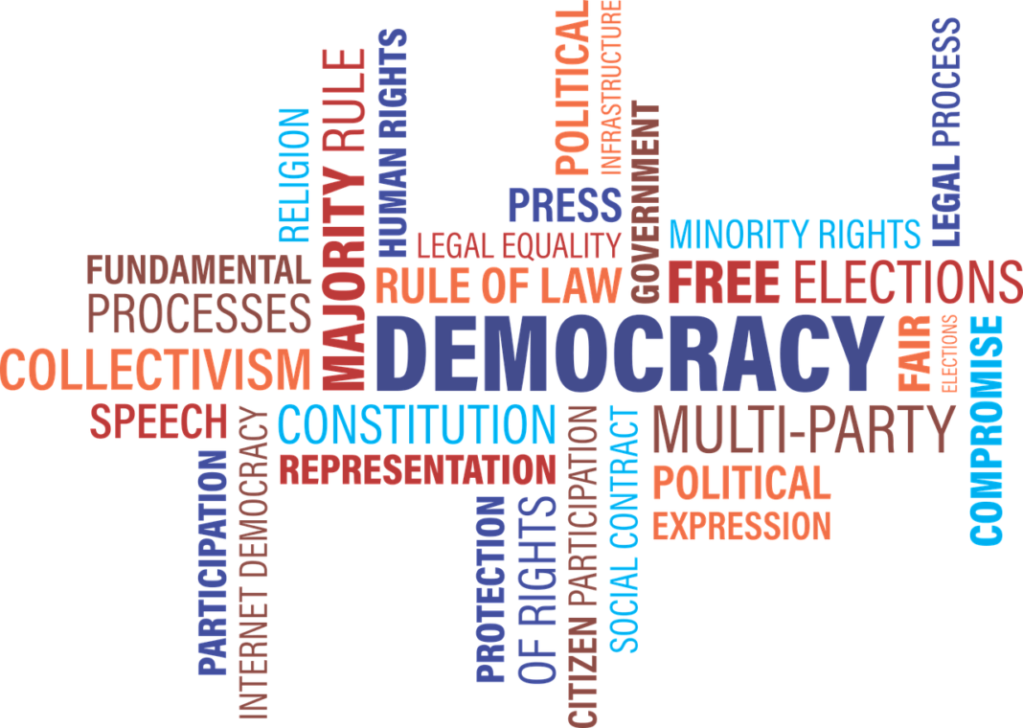
Over the past few decades in the United States, citizens have spectated as those with power continue to tighten their chokehold on the U.S. political processes. While this has been an extremely negative trend of events over time, it has exposed inherent vulnerabilities in our systems that wouldn’t have otherwise been exposed.
To set the stage: A 2014 study, conducted by Princeton University and Northwestern University, concluded that elite and corporate interests override the will of the people as it pertains to the policies that are enacted in the United States. Utilizing 1,779 policy issues from 1981 to 2002, the study gauged the opinions of Americans in the 50th and 10th percentiles—as well as members of the elite and interest groups. Ultimately, it was concluded that regardless of popular support, the probability of passing a policy remained stagnant. However, when elites and interest groups are not in favor of a policy, there is nearly a 0% chance that it will become law. On the flip side, the chances of a policy that they favor becoming law floats at around 45%. Frighteningly, this is not even the start of the decay of our democratic institutions.
While this study was released in 2014, it is deeply important to consider that the data was taken from 1981 to 2002—and there have been developments to deteriorate the democratic fabric of the United States. All of these problems fall under the umbrella of anti-majoritarianism, which is contradictory to democratic values. These issues fall in the categories of a recent Supreme Court decision, centuries-old institutions, and voter suppression laws since 2010.
The principal Supreme Court decision that exacerbated this issue was the decision of Citizens United vs. the Federal Elections Commission (2010). This Supreme Court decision overturned a century-old precedent which limited corporate independent expenditures into political campaigns. As such, it is now allowed for unlimited funds to be donated to campaigns by corporations and other private entities on the basis that donations are a form of free speech. Therefore, it can only be assumed that—since there are now no limits on the elite’s influence on the political system—the issue of private interests in politics will only become worse. And the system will continue to entrench itself in biased pluralism.
Another important tenet of a true democracy aside from representation of public interests is that the people should be the sole electors of representatives—not institutional caveats. One of the most profound such institutions is the Electoral College. To preface, I do understand that this was a system put in place for ostensibly benevolent reasons, yet now it does more to disenfranchise the democratic voice of the people than actually bequeath power to them. To provide an understanding of this rationale, we must first visit the historical significance of the Electoral College. In Alexander Hamilton’s Federalist No. 68, he states that the body was the result of a compromise made in order to ensure that undue power was not placed in larger states over others. However, this is inherently anti-majoritarian in the context of post-industrial America. The reason is that now in a time where extreme wealth inequality exists, the will of the people will be more easily subdued by corporate interests. These corporations can purposefully boost campaigns and PAC messaging into states that could tip the scales for one presidential candidate over another without winning the popular vote. Furthermore, direct democratic elections in which the popular vote elects the candidate of choice make more sense in a country of 330 million people. One vote should mean one vote. In the area of elections, however, the issues of the electoral college pale in comparison to the voter suppression in many red (as well as a few blue) states.
For a long time, it was a common belief that voter suppression was a thing of the past. This is because the Voting Rights Act of 1965, signed by LBJ, outlawed common voter suppression tactics and established that the federal government would closely watch states and localities with a history of committing acts of voter suppression. However, the Supreme Court gutted the Voting Rights Act in the ruling of Shelby County V. Holder (2013) by rolling back provisions of federal oversight in such areas. With the federal inability to check states, many voter suppression laws have been passed, which make it harder to vote and subsequently impact minority groups the most. These laws include everything from cutting polling places in minority areas to making it illegal to provide food or water to people in extremely long lines. Each state has its own idiosyncratic tactics, but the glaring trend of data shows that Republicans (barring a few states) want to make it more difficult for working people and minority groups to vote, while Democrats—with the exception of R.I. and N.H.—strive to make voting easier for everyone by enacting policies like universal mail-in voting.
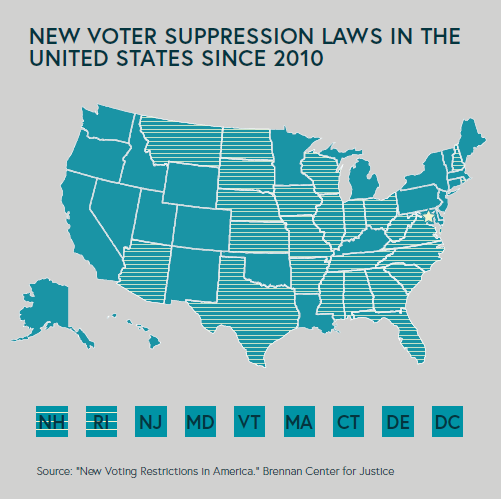
A common fear usually expressed, however, is the deeply unfounded argument that making voting more readily available would engender voter fraud. In fact, a 2014 study concluded that out of over a billion ballots cast from 2000-2014 (before the Voting Rights Act was gutted), there were just 31 credible instances of voter impersonation. Granted, it would be exceedingly difficult to expose every single instance, yet there is not a shred of evidence to suggest that voter fraud exists in this country on more than a negligible basis. So, let’s get down to the truth behind the voter suppression laws: Republicans know that the voting population has tipped out of their favor—and this is how they hold on to power. This reality is so lucid that even Lindsey Graham (R-S.C.) stated in an stated that there wouldn’t be another Republican presidential win if Republicans don’t do something about mail-in voting.
With all of that said, how does this tie into the notion that America is an oligarchy? Well, making voting less available for working class and minority Americans—yet not for white and wealthier Americans—tips elections in favor of politicians that protect the status quo. In this case, the status quo is that the economic elite and interest groups control the political process; this will not stop until we elect people who will actively work to dismantle the system. And in order to dismantle it, voting must become a fair, balanced, process that allows everyone an equal opportunity to have a say in who is elected into positions of power—and how they exercise that power.
-
The Burgeoning Wrath of the U.S. Military-Industrial Complex

On January 17th, 1961, President Eisenhower delivered a farewell address in which he warned of the burgeoning rise of the military-industrial complex, an apparatus that he helped create and one that was consolidating power & influence more rapidly than any instrument of the government should. For many decades, this speech proved esoteric. Yet in this era of the internet, it has emerged as a sociopolitical behemoth, a sort of abstract boogeyman that everyone fears. Regardless, it is more than imperative to elucidate why the military-industrial complex exists at the forefront of the U.S. political landscape.
Before we dig in, let’s define a military-industrial complex as a network of institutions and individuals involved in the production of weapons and military technologies; by practice, the notion of a military-industrial complex also entails a symbiotic relationship between a country’s military, economy, and politics. Indeed, the term was first coined 61 years ago by Eisenhower, but the idea of a military-industrial complex in the modern U.S. has evolved from a “theory” to an entity that is almost universally recognized in politics and academia.
The origins of the U.S. military-industrial complex date back to World War II, when arms production soared from around 1% of the U.S. GDP in 1940 to over 40% of the GDP in 1945. Perhaps many believed that this metric would plummet once Japan surrendered, but—while the American people celebrated victory—defense contractors entrenched in the establishment conspired to perpetuate their profits.
World War II came in a pre-Truman era when U.S. foreign policy had not yet permeated into a systemized, for-profit, post-industrial enterprise: one that transcended the once perpetual oscillation between eras of war and eras of peacetime. This began to change in 1940 and 1941 when Congress appropriated $36 billion to the then-War Department alone, which was more than the federal government spent throughout World War I. From this point onward, the government established itself as the primary investor in military weapons, supplies, and technology. The War and Navy departments moved from sealed-bid contracts with defense contractors to negotiated contracts—paving the way for the likes of General Motors and Lockheed to be paid the full costs of their contracts plus a fixed fee—which eventually became an enterprise with multiple ancillary fees based on how long it takes for debts to be paid off.
At the same time, the nature of negotiations and a variety of other causes oversaw the beginning of the gradual consolidation of the defense industry from one with hundreds of competing companies to one with dozens of big corporations to what we have today, where a majority of profits are split among a few massive, multinational conglomerates. Meanwhile, as economic relationships between these companies and the government evolved, the political landscape began to account for the military budget as a focal point of how tax revenue is allocated within the federal budget. Thus emerged a prominent iron triangle that, indeed, can now be referred to as the United States’ military-industrial complex. All three parties benefit from this arrangement, and defense contractors going through hard times often get bailed out and subsidized across the board; it is a form of corporate socialism for the defense industry.
It is difficult to specifically ascertain the extent to which the military-industrial complex has shaped U.S. foreign policy and the unsolicited wars we’ve initiated—because such interactions necessarily take place deep behind closed doors, in places that are even more secretive than most such apparatuses—so, at least right now, one can only extrapolate the ability of defense elites to shape policy in certain eras. This is particularly apt when it comes to proxy wars initiated by the U.S. during the Cold War (though it is clear to anyone who’s done the research that the military-industrial complex was behind the Vietnam War).
Alas, the ability of the military-industrial complex to manufacture entire wars became clear by the time the George W. Bush administration lured us into Iraq. Say what you want about George H.W. Bush (who perhaps lost his bid for presidential re-election because he wouldn’t bow to those who sought a greater role in the Gulf War), but he didn’t sell out to the military-industrial complex the way his son did.
In contrast, George W. Bush loaded his administration with prominent neoconservatives on the right who effectively sought to keep the U.S. in a state of perpetual war. This way, the defense contractors in the pockets of both major parties would perpetuate their profits. So, Bush took the back seat and deferred to his neoconservative advisors—Paul Wolfowitz, Elliott Abrams, Richard Perle, Paul Bremer, etc.—plus Bush’s VP, Dick Cheney, and Bush’s Defense secretary, Donald Rumsfeld (who did not self-identify as neocons but did share their propensity for backing policies that prioritize profits over the interests of the people). Driven by corruption, they were truly evil men who deceived decent people, like Bush’s Secretary of State Colin Powell, to get their way.
From left to right: Donald Rumsfeld, George W. Bush, and Dick Cheney. Soon enough, this nefarious faction within the Bush Administration successfully used the hysteria, confusion, unity, and desire to get “revenge” after the 9/11 terrorist attacks to justify wars not only in Afghanistan but also Iraq: a country that had nothing to do with 9/11. They capitalized on U.S. ignorance about that region of Earth to justify wars while steering clear of Saudi Arabia, even though most of the 9/11 terrorists were Saudi. (Why? Perhaps because both parties enjoy a clandestine relationship in which we discreetly sell guns to them, they sell oil to us, and each turns a blind eye to the other’s injustices.)
Flash forward roughly two decades: We blew $21 trillion on the neocons’ “War on Terror,” and we still spend over $800 billion per year on the military even in a time of “peace.” But wait: there’s more. The defense industry controls both parties. It really doesn’t matter which president we elect; they all cave to these powerful forces. The media cannot afford to decry any of this—both figuratively and literally. And because the propaganda campaigns of the military-industrial complex have proved so successful in penetrating American culture and society, anyone who dares to blow the whistle is painted as a crazy, anti-American extremist.
Nobody is denying that this country needs a military—and certainly one of the best—to protect itself, prevent threats, and other things of that nature. But if you take even one look at where all of the actual money is going, it’s clear that the budget is not a matter of defense; without a shadow of doubt, it is a matter of corruption. We don’t need fleets of tanks in Hawaii. We don’t need to have all three of the world’s largest air forces: the U.S. Air Force, the U.S. Navy’s Air Force, and the U.S. Army’s Air Force. We don’t need a navy that is stronger than all of the other navies in the world combined. The list continues.
And that’s just general talking points. When you get into the case-by-case basis of how the $801 billion is officially distributed within the Department of Defense—not to mention the hundreds of billions (possibly even trillions) of dark money that goes unaccounted for—we are overpaying corporations like Lockheed Martin, Raytheon, and Boeing for rudimentary technology; we are replacing advanced technology that towers over the world with even more superfluous technology; and it is clear that we could cut the Department of Defense budget by at least $100-200 billion and still retain a military that could defeat all of our enemies combined if they somehow invaded us.
China is the only other country that spends at least $100 billion on its military, and all of the other countries in the world spend less than $80 billion. Bernie Sanders is not afraid to speak out about this. In fact, even Donald Trump spoke out about it (although his policies did not reflect his rhetoric). But there aren’t many other prominent politicians who have dared to utter a word about the military-industrial complex ever since Eisenhower. That was 61 years ago, and all of the things he feared the most have gotten much worse. Yet until we begin to address it, nothing will change. The only things that will not change are the very constants that hurt this world the most: the hundreds of thousands of American lives lost in unnecessary wars, the millions of lives of other global citizens lost (most of whom were civilians), the billions of lives devastated, and the tens of trillions of dollars wasted.
Note: Luke is Alyson’s boyfriend, and he wrote this guest post with intentions similar to those of Alyson in running this blog: to inform the public of contemporary societal problems that media outlets often fail to elucidate. He is currently studying Government and History at Harvard University.
-
Square One: An Opening Synopsis of My Blog’s Mission
Upon starting this blog to share my political convictions, I realized that I needed to share my intentions regarding why. Many may ask, “why this?” And subsequently, “why now?” However, the answers to both questions are intrinsically intertwined and a bit convoluted. Regardless, I will do my best to answer them in this post.
Over the past few years in the United States, I have watched people rip their relationships to shreds because of their allegiances to institutions that quite frankly do not care about them. Politics as a topic has become taboo and full of untruths. It’s impossible to open an app without seeing or involving ourselves in discourse over manufactured issues created by the media to keep us from hashing out those that genuinely plague this country. It’s all part of a grander elite scheme to keep the people of the United States from exercising our power. I’ve chosen to create a political blog to educate and show others that real answers to our problems are being clouded by corruption.
There is a similar reason why now I’ve chosen to create this platform. In this moment of United States political history, we live in an oligarchy that successfully facades itself as a representative democracy. Corruption runs this country, and very few representatives truly care for their constituents. Now more than ever, an equitable system that upholds a just society is becoming a pipe dream in this country due to dark money that buys nearly everyone in the government. I don’t often see government corruption called out in modern media, so I’ve decided to take matters into my own hands and create “Alyson’s Updates.”
I’m sure the aforementioned concepts sound nice, but what makes me qualified to speak on these topics? Over the past handful of years, I’ve spent my time inside and outside of school enriching my knowledge of political concepts through a multitude of lenses. I hold an undergraduate degree in International Politics & Law, History, and Public Administration. I also spent a reasonable amount of time in Cambridge, Massachusetts, with my boyfriend and became affiliated with the Harvard Democrats (although most of my values personally lie outside those of the Democratic Establishment).
Over time, I’ve noticed that I look at politics differently than I used to. My approach when analyzing political concepts has matured in that I don’t just take issues for their face value. I read into the matter, look at peer-reviewed studies, see how other first-world countries implement policies and then form my opinion. However, the views that I hold are not always 100% influenced by the research that I’ve done. Some issues are merely a testament to my commitment to upholding human rights in this country, and I will likely touch on that from time to time.
Finally, I want to disclaim that everything I write on this blog is my educated opinion. I do not seek to offend, ostracize, or hurt anyone. Instead, I am looking to offer information and perspectives that people may not otherwise encounter. This blog is a medium to uphold open and honest political discourse/education, and I do not seek to degrade any ideology. Rather, I strive to open minds through sharing what I’ve learned in my schooling and personal research.
-
Subscribe
Subscribed
Already have a WordPress.com account? Log in now.
